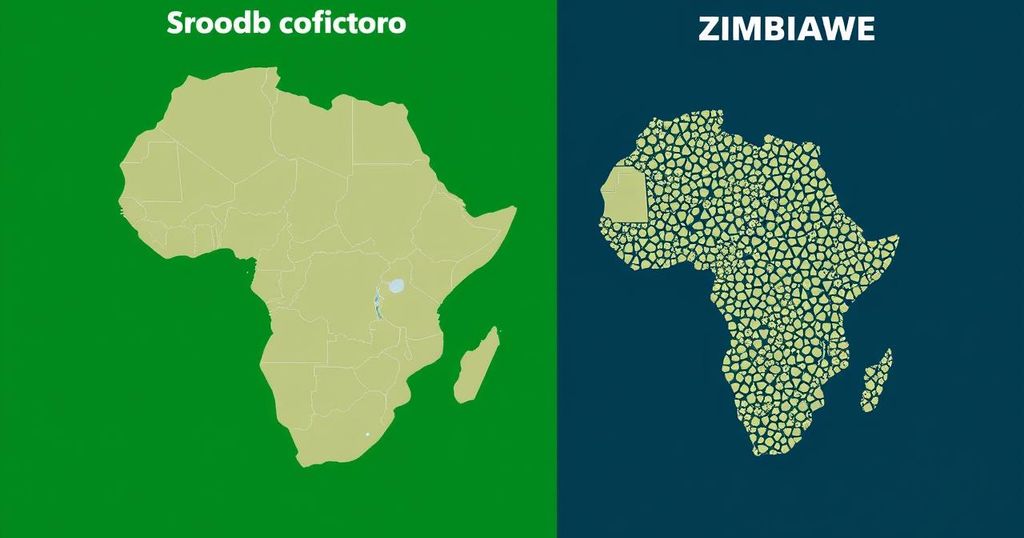South Africa’s Food Security Crisis: A Comparative Analysis with Zimbabwe

A Stellenbosch University report indicates that South Africa’s food security has deteriorated since 2012, currently showing child stunting rates similar to Zimbabwe and highlighting that one in four poorer households reported child hunger in 2023. The Food Security Index has dropped significantly, indicating increased food insecurity. The report also discusses the impacts of inflation and poverty on food diversity and nutritional value, suggesting the need for better affordability and nutrition alignment in food options. The South African Poultry Association advocates for VAT exemptions on specific foods to relieve low-income households.
A recent report from Stellenbosch University reveals concerning trends in South Africa’s food security, indicating a decline since 2012, with troubling statistics comparable to those of Zimbabwe. The report found that approximately one in four of the poorest households reported that children experienced hunger in 2023. Currently, South Africa has a child stunting rate of 25%, which is only marginally better than Zimbabwe’s rate of 23.5%, alongside 4.7 million individuals who do not meet their basic caloric needs. Notably, female-headed households have a heightened vulnerability to hunger, with 16.7% of those in rural areas and 11.9% in urban settings experiencing food insufficiency, compared to 12.5% and 8.7% in male-headed households, respectively. The South African Food Security Index for 2024 shows a decrease in food security, dropping to a score of 45.3 from a peak of 64.9 in 2019, indicating deeper levels of food insecurity. This troubling trend persists despite previous advancements in reducing hunger rates. The report also highlights a reduction in the diversity and nutritional quality of food consumed, with 11.8% of households reporting poorer dietary variety due to economic constraints. The Covid-19 pandemic, coupled with rising inflation, has exacerbated these challenges. Prof. von Fintel noted that food inflation has outpaced general inflation, forcing families to allocate funds to other financial obligations, which often results in purchasing less nutritious food options. South Africa must address the alignment of affordability and nutritional quality in the food supply. Prof. von Fintel emphasized the need for nutritious yet affordable food options to improve long-term health outcomes. He cited affordable foods such as chicken liver, tinned fish, peanut butter, and leafy green vegetables as examples that need to be emphasized. Furthermore, he recommended zero-rating VAT on healthy food products to enhance affordability. In light of these findings, the South African Poultry Association has reiterated calls for the Treasury to exempt specific chicken products from VAT to alleviate burden on low-income households. While the recent Essential Food Pricing Monitoring Report by the Competition Commission has noted a decline in food cost pressures, concerns remain regarding the retailers’ unwillingness to swiftly pass these savings on to consumers. This overall analysis paints a grim picture of food security in South Africa, necessitating immediate and strategic interventions to avert a further decline in nutritional health and food accessibility for the population.
Food security is a critical issue in South Africa, intertwined with various socio-economic factors, including poverty, household structure, and inflation rates. The recent trends indicate a regression in food security standards from 2012 to 2023, with statistics revealing alarming rates of child stunting and hunger across different demographics. Despite South Africa’s relative economic standing, the nutritional status of households has been jeopardized by rising food prices and limited access to diverse diets. This scenario is compounded by increased vulnerability in specific household typologies, notably those led by women.
In conclusion, the current state of food security in South Africa is precarious, characterized by alarming rates of hunger and malnutrition, particularly among children in poorer households. The decline in the Food Security Index indicates systemic issues that require urgent attention, including inflationary pressures on food prices and the need for affordable, nutritious food options. To effectively address these challenges, strategic public policies, including potential VAT exemptions on healthy food products and targeted support for vulnerable populations, are essential for safeguarding the nutritional wellbeing of South Africans and reversing detrimental trends in food security.
Original Source: www.dailymaverick.co.za








